Washing machine in the toilet: placement rules and interesting solutions
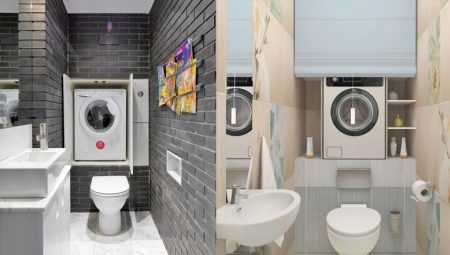
Sometimes there is not enough space in the bathroom for the necessary things, so people have to come up with non-standard solutions. Some put a washing machine in the corridor or even in the room. Of course, this is not an option, the design of the living room does not provide for the presence of equipment for washing. You can think of a better way to place this technique in the interior - for example, place it above the toilet in the toilet.

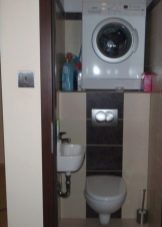
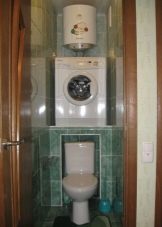
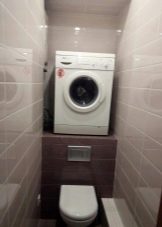
Some nuances
Of course, such a solution will require a reliable foundation on which the washing machine will stand. When you have an idea, you can bring it to life, the main thing is to correctly organize a place for technology. The advantage of this approach is that you can build a door in the toilet that will hide the washing machine.
It should be noted right away that the washing machine over the toilet is, rather, a forced decision. And if there is no other way out, it remains to resort to this option.
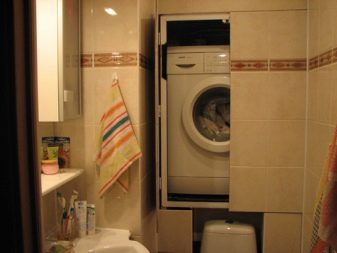
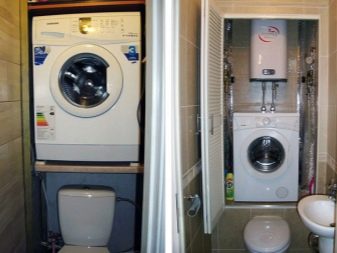
If there is space, then you should not rush, because the limited space can create difficulties during installation, in addition, it is required to create reliable support for the machine, since the device is heavy. At a time when the machine washes clothes and clothes, going to the toilet becomes difficult. A washing machine is a technique, and it can break. It will take strength to remove it and carry out diagnostics, because it will not be so easy to do this due to the weight of the equipment. And after the diagnosis it will have to be put back in place - it is not so easy.
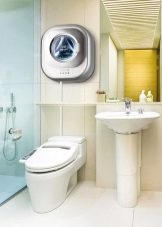
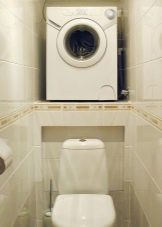
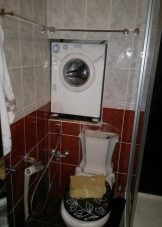
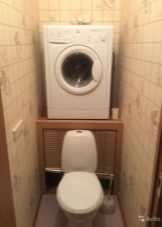
When the decision is made you need to find out what size the washing machine is. In addition, the back wall of the toilet is measured, and you should not ignore the passage of all existing hoses and pipes.
When installing equipment over the toilet, do not forget that a bulky model will bulge and cause discomfort, so you need the most compact model.
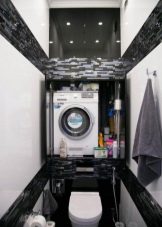
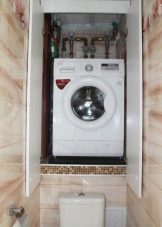
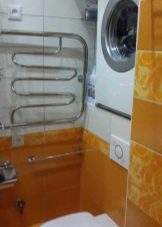
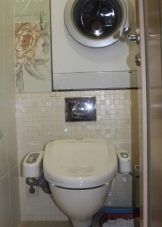
The washing machine will be over the toilet, which means that you will have to reach for it every time (people of small stature may even have to use a chair). The entire structure must be in a niche, otherwise the protruding part will cause discomfort. If it is not possible to change the washing machine, then you can move the toilet forward, however, this will require additional time and costs for the work of the craftsmen.

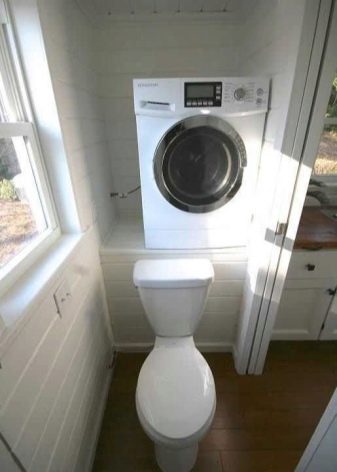
Building a robust design
After all measurements have been made, that is, the width, depth, height have become known, then you can build a reliable structure on which the washing machine will be located.
It is important not to forget that the depth should be matched to the size of the machine so that the device does not stick out.
For maximum reliability, professional craftsmen advise taking a 40 by 40 metal corner as a basis.Using a hacksaw for metal, you need to cut pieces: 3 x 60 cm, 2 x 55 cm, 2 x 45 cm.
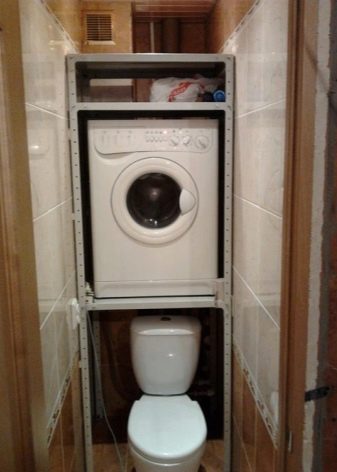
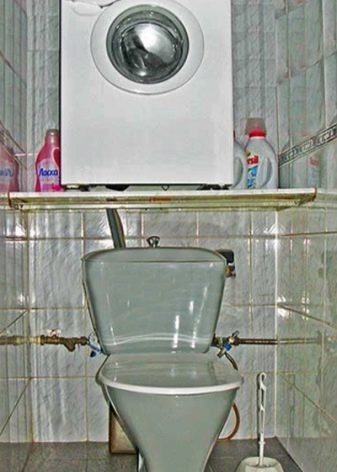
Do not forget that when you turn on the "spin" button, vibration will begin, and in order for the structure to withstand it, you should adhere to the following rules.
- Prepare several pieces (described above) that will fit the size of the technique.
- The first is installed above the tank, and the other is attached to the wall, which will be parallel to the previous one and slightly lower.
- The next step is to create the frame. To do this, you need to weld 2 small corners. Then they are connected to each other using one more piece.
- For maximum endurance, it is advisable to make more props down next to it. The result is a sturdy shelf that can support a lot of weight. It will be better to purchase corners made of iron, as well as reliable fasteners. If there is no experience with a welding machine, then it is better to call the masters.
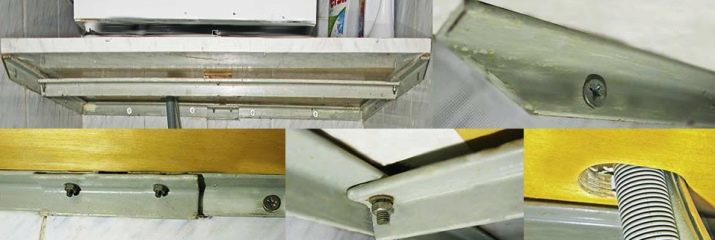
Connecting the device
After the stage of constructing a reliable shelf, the next one is to connect the device to communications, namely to water supply, power supply, sewage. The whole process of entering the drain and water should be thought out.
In no case should a short circuit occur, so it is more advisable to use a moisture-resistant outlet in the toilet.
- Power supply. The outlet should be in a convenient location that is easy to reach. It is desirable that it be moisture resistant - if it is not, then it will have to be created by our own efforts. It is required to stretch a 3-core insulated wire 2.5 mm2 from the shield. Further, the wire is enclosed in a cable channel and is connected to an outlet through the machine.
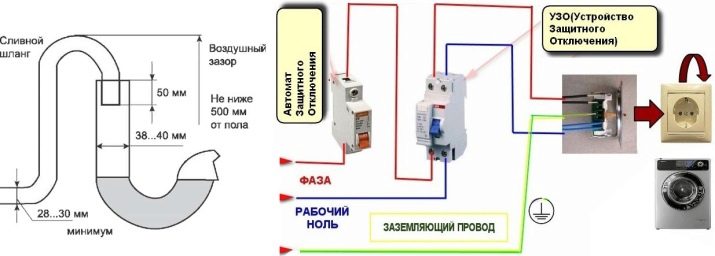
- Sewerage. The first step is to correctly place the drain hose - it should not be located below 50 cm from the machine. Otherwise, water will constantly flow to the floor. The hose is connected to a riser or siphon. A sealed connection requires the use of a sealant and sealing collars.
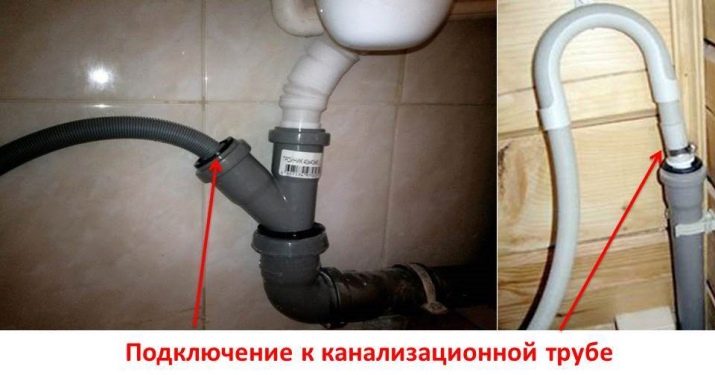
- Water pipes. Usually, the connection is made in cold water, you must first turn it off. The tee crane must be inserted (it is good if the pipe is made of metal-plastic, because in the case of a metal pipe, you have to do welding work) into the cut of the pipe. Next, a water inlet hose is screwed to the tap, which departs from the device. The supply tap (for connecting the hose) is usually chosen with a locking system so that in the event of an emergency it is possible to quickly turn off the water.
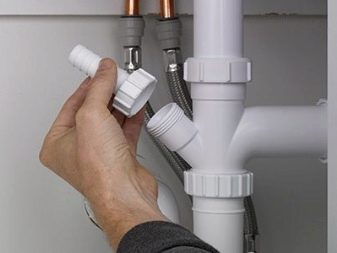
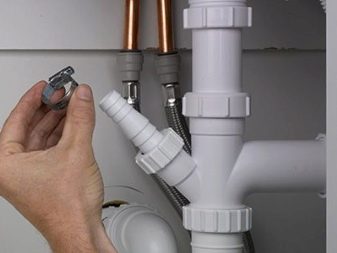
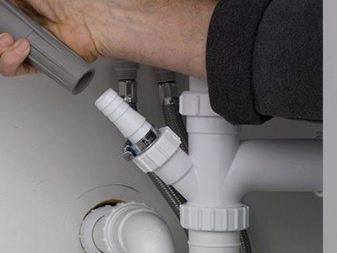
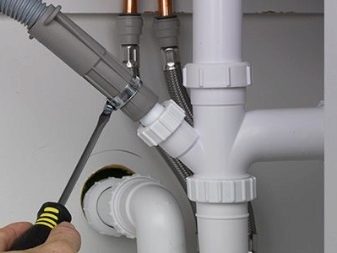
Opinions of people about installing the device over the toilet are divided - someone considers this option to be the best for themselves, because space is saved, and someone is afraid that the washing machine will fall. In addition, it is not easy to combine cleaning and going to the toilet (some wash very often). Mostly this method is used in extreme cases - when there is no place at all. Whether to implement this idea into reality or not is up to you.
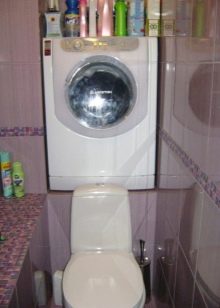
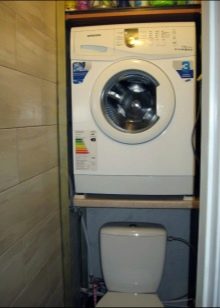
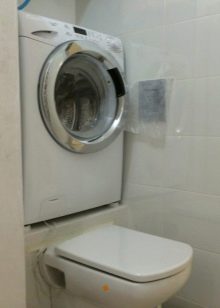
For information on how to make a shelf under the washing machine above the toilet, see below.





